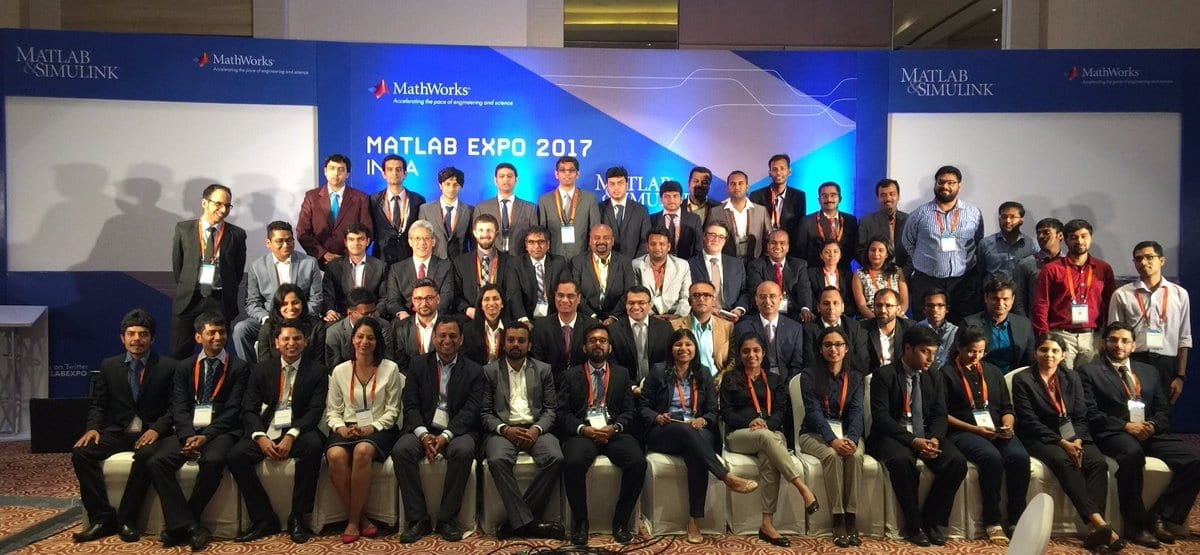With over 2 million users worldwide, MATLAB is one of the largest and the most widely used language for technical computing. Needless to mention, there is a constant demand for professionals who use MATLAB for visualisation and programming.
MATLAB is primarily known for its matrix algebra capabilities but its toolboxes offer other functionalities ranging from scientific and engineering graphics to modelling, simulation, and prototyping along with application development, including graphical user interface building. However, did you know, that its toolboxes also helps to create, train, and simulate shallow and deep learning neural networks, in addition, to analyse and model data using statistics and machine learning?
A vast collection of MATLAB functions in toolboxes also help solve problems of a specific class. Signal processing, neural networks, wavelets, simulation, fuzzy logic, control systems and much more are the areas where tool boxes are available.
Brushing Up Your MATLAB Skills
It would not be wrong to say that everybody who comes from a technical background has at least once used MATLAB. But when it comes to using it professionally for analytics, its almost always the case where most users often end up having difficulty in using the platform.
“We provide free MATLAB training known as the ‘MATLAB Onramp’ for anyone interested in getting started with learning and using it. You don’t need any license; all you need is a MathWorks account. It is hugely popular among students and professionals,” said Kishore Rao, managing director, MathWorks India, while speaking with AIM.
The 2 – hour MATLAB Onramp course provides hands-on experience via the use of an integrated, web-based version of MATLAB.
MATLAB For Deep Learning
For MATLAB, a continued area of investment has been the imaging space with new image processing and computer vision algorithms, more complete coverage for standard camera interfaces such as USB3 Vision, and FPGA-ready implementations of common vision algorithms. Earlier this year, it made improvements in vision-specific tools for deep learning and automated driving.
Deep learning – A new algorithm area that enables recognition accuracy at levels better than humans. MATLAB provides a framework that makes deep learning easy to use for engineers and scientists. It also provides easy access to pre-trained networks developed by experts and leverages GPUs without GPU programming. With just a few lines of code, MATLAB helps engineers to explore and develop high-performance recognition systems.
Automated driving – Vision systems are a key part of ADAS and automated driving systems. Earlier this year, MathWorks introduced the Automated Driving System Toolbox to enable ground-truth labelling, generation of synthetic driving scenarios, sensor fusion, and vision algorithms designed for automated driving.
“You can use MATLAB to learn and gain expertise in the area of deep learning. Most of us have never taken a course in deep learning. We have to learn on the job. MATLAB makes learning about this field practical and accessible. In addition, it enables domain experts to do deep learning – instead of handing the task over to data scientists who may not know your industry or application,” the company said.
Further Nurturing MATLAB
“With MATLAB, you can integrate results into your existing applications. It automates deploying your deep learning models on enterprise systems, clusters, clouds, and embedded devices,” Rao added.
Moreover, to aid the idea and vision of the company to “enable engineers to become data scientists,” MATLAB is all set to release its latest R2017b version in September.
“It’s a big release for data analytics. We are adding significant details to machine learning in addition to a new application for text analytics toolbox,” Rao said.
MathWorks, with MATLAB, is dedicated to filling the gap between engineers and data scientists to provide them with the right tools for deep learning.
What Else?
For multidimensional data analysis, Statistics and Machine Learning Toolbox provides feature selection, stepwise regression, principal component analysis (PCA), regularisation, and other dimensionality reduction methods that let you identify variables or features that impact your model.
Moreover, the company is also venturing into providing IoT solutions.
“We provide Internet of Things (IoT) solutions on MATLAB too. You can publish data from your target hardware to the IoT using ThingSpeak. It provides real-time data collection, data processing, visualizations, apps, and plugins,” Rao said.
ThingSpeak, an IoT analytics platform service, allows users to aggregate, visualize, and analyse live data streams in the cloud. You can send data to ThingSpeak from your devices, create instant visualizations of live data, and send alerts using web services like Twitter® and Twilio®.
With MATLAB analytics inside ThingSpeak, you can also write and execute code to perform pre-processing, visualisations, and analyses. ThingSpeak enables engineers and scientists to prototype and build IoT systems without setting up servers or developing web software.
MATLAB and Data Analytics
Much of the data analytics market focuses on applications in sales and marketing. Given the roots in engineering and science, MathWorks focuses more on applications that involve physical-world data such as sensor, image, video, and telemetry data. This includes applications such as predictive maintenance, where companies are looking to predict failures in their equipment by analysing sensor data, as well as advanced driver assistance systems that leverage video, lidar, and telemetry data to improve vehicle safety.
Oftentimes, the people working on these projects have expertise about the equipment that is being built, but they don’t have extensive statistical or machine learning expertise. As a result, MATLAB has focused on making it easier to apply machine learning and deep learning in practice. This includes point-and-click apps that users can use for getting started and consistent interfaces that make it easy to combine tools from different domains. Lastly, it provides deployment paths for running deployed analytics on embedded devices as well as IT infrastructure and clouds.



















































































